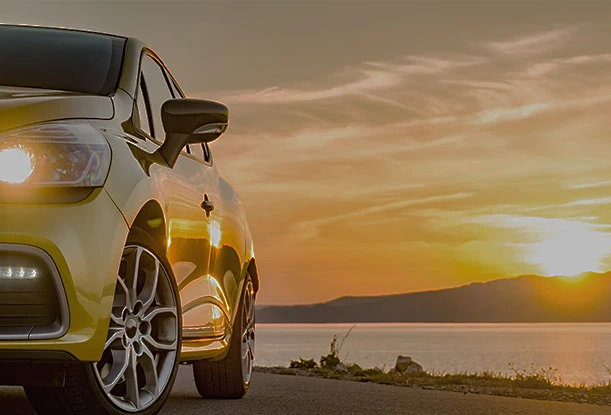
-
 Afrikaans
Afrikaans -
 Albanian
Albanian -
 Amharic
Amharic -
 Arabic
Arabic -
 Armenian
Armenian -
 Azerbaijani
Azerbaijani -
 Basque
Basque -
 Belarusian
Belarusian -
 Bengali
Bengali -
 Bosnian
Bosnian -
 Bulgarian
Bulgarian -
 Catalan
Catalan -
 Cebuano
Cebuano -
 Corsican
Corsican -
 Croatian
Croatian -
 Czech
Czech -
 Danish
Danish -
 Dutch
Dutch -
 English
English -
 Esperanto
Esperanto -
 Estonian
Estonian -
 Finnish
Finnish -
 French
French -
 Frisian
Frisian -
 Galician
Galician -
 Georgian
Georgian -
 German
German -
 Greek
Greek -
 Gujarati
Gujarati -
 Haitian Creole
Haitian Creole -
 hausa
hausa -
 hawaiian
hawaiian -
 Hebrew
Hebrew -
 Hindi
Hindi -
 Miao
Miao -
 Hungarian
Hungarian -
 Icelandic
Icelandic -
 igbo
igbo -
 Indonesian
Indonesian -
 irish
irish -
 Italian
Italian -
 Japanese
Japanese -
 Javanese
Javanese -
 Kannada
Kannada -
 kazakh
kazakh -
 Khmer
Khmer -
 Rwandese
Rwandese -
 Korean
Korean -
 Kurdish
Kurdish -
 Kyrgyz
Kyrgyz -
 Lao
Lao -
 Latin
Latin -
 Latvian
Latvian -
 Lithuanian
Lithuanian -
 Luxembourgish
Luxembourgish -
 Macedonian
Macedonian -
 Malgashi
Malgashi -
 Malay
Malay -
 Malayalam
Malayalam -
 Maltese
Maltese -
 Maori
Maori -
 Marathi
Marathi -
 Mongolian
Mongolian -
 Myanmar
Myanmar -
 Nepali
Nepali -
 Norwegian
Norwegian -
 Norwegian
Norwegian -
 Occitan
Occitan -
 Pashto
Pashto -
 Persian
Persian -
 Polish
Polish -
 Portuguese
Portuguese -
 Punjabi
Punjabi -
 Romanian
Romanian -
 Russian
Russian -
 Samoan
Samoan -
 Scottish Gaelic
Scottish Gaelic -
 Serbian
Serbian -
 Sesotho
Sesotho -
 Shona
Shona -
 Sindhi
Sindhi -
 Sinhala
Sinhala -
 Slovak
Slovak -
 Slovenian
Slovenian -
 Somali
Somali -
 Spanish
Spanish -
 Sundanese
Sundanese -
 Swahili
Swahili -
 Swedish
Swedish -
 Tagalog
Tagalog -
 Tajik
Tajik -
 Tamil
Tamil -
 Tatar
Tatar -
 Telugu
Telugu -
 Thai
Thai -
 Turkish
Turkish -
 Turkmen
Turkmen -
 Ukrainian
Ukrainian -
 Urdu
Urdu -
 Uighur
Uighur -
 Uzbek
Uzbek -
 Vietnamese
Vietnamese -
 Welsh
Welsh -
 Bantu
Bantu -
 Yiddish
Yiddish -
 Yoruba
Yoruba -
 Zulu
Zulu
Jan . 15, 2025 02:18
Back to list
the two primary types of drum brake systems are
Drum brake systems have been a cornerstone of automotive braking technology for decades. While the landscape of automotive technology continues to evolve rapidly, drum brakes remain a fundamental component in many vehicles worldwide. The two primary types of drum brake systems are the leading/trailing shoe brakes and the dual-leading shoe brakes, each offering distinct advantages and functionality.
The choice between leading/trailing and dual-leading shoe drum brake systems often depends on the vehicle's design, intended use, and economic considerations. While leading/trailing systems are renowned for their cost-effectiveness and reliability in general use, dual-leading systems are celebrated for their superior stopping power, albeit at a higher cost and complexity. Understanding the characteristics and advantages of each drum brake system type is essential for automotive manufacturers, mechanics, and vehicle enthusiasts. This knowledge ensures that the right braking technology is applied to meet specific performance and safety standards. Moreover, this understanding also fosters trust among consumers, as manufacturers who prioritize appropriate brake system selection demonstrate a commitment to safety and performance. Regardless of the system type, routine maintenance of drum brakes is crucial. Regular checks and timely servicing contribute to prolonged system longevity and optimal performance. High craftsmanship in design and manufacturing, diligent maintenance, and informed choices in system application collectively uphold the trust and reliability associated with drum brake systems. Ultimately, the evolving landscape of automotive technology, coupled with the varied demands on vehicle braking systems, necessitates a nuanced understanding of these two primary drum brake types. As manufacturers innovate and refine these systems, leveraging their unique benefits will remain a fundamental aspect of automotive design.


The choice between leading/trailing and dual-leading shoe drum brake systems often depends on the vehicle's design, intended use, and economic considerations. While leading/trailing systems are renowned for their cost-effectiveness and reliability in general use, dual-leading systems are celebrated for their superior stopping power, albeit at a higher cost and complexity. Understanding the characteristics and advantages of each drum brake system type is essential for automotive manufacturers, mechanics, and vehicle enthusiasts. This knowledge ensures that the right braking technology is applied to meet specific performance and safety standards. Moreover, this understanding also fosters trust among consumers, as manufacturers who prioritize appropriate brake system selection demonstrate a commitment to safety and performance. Regardless of the system type, routine maintenance of drum brakes is crucial. Regular checks and timely servicing contribute to prolonged system longevity and optimal performance. High craftsmanship in design and manufacturing, diligent maintenance, and informed choices in system application collectively uphold the trust and reliability associated with drum brake systems. Ultimately, the evolving landscape of automotive technology, coupled with the varied demands on vehicle braking systems, necessitates a nuanced understanding of these two primary drum brake types. As manufacturers innovate and refine these systems, leveraging their unique benefits will remain a fundamental aspect of automotive design.
Prev:
Latest news
-
What Are Drum BrakesNewsJul.07,2025
-
Understanding Brake Drum MaterialNewsJul.07,2025
-
Semi-Trailer Brake Drum: A Key Component for Extreme Loads and Long-Distance TransportNewsJul.07,2025
-
Drum Brake Pads for SaleNewsJul.07,2025
-
Brake Drums for SaleNewsJul.07,2025
-
Brake Drum ManufacturerNewsJul.07,2025
-
Aluminum Brake Drums: The Future of High-Performance CarsNewsJul.07,2025
